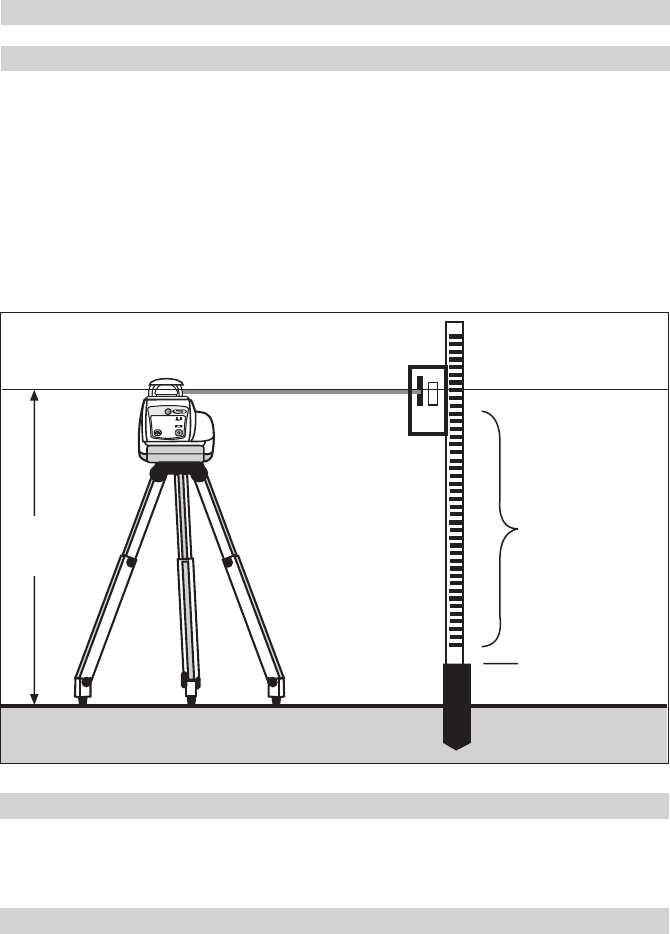
8
OPERATING EXAMPLES
Determining the Height of Instrument (HI)
The height of instrument (HI) is the elevation of the laser’s beam.
The HI is determined by adding the grade-rod reading to a benchmark or known elevation.
Set up the laser and place the grade rod on a job-site benchmark (BM) or known elevation.
Slide the receiver up/down the grade rod until it shows an on-grade reading.
Add the grade-rod reading to the benchmark to determine the height of instrument.
Example:
Benchmark = 30.55 m (100.23 ft)
Rod reading = +1.32 m (+4.34 ft)
Height of instrument = 31.87 m (104.57 ft)
Use this HI as a reference for all other elevations.
Marking Heights
Set up the laser in horizontal mode (e.g., using a tripod or wall mount) so that the laser beam is at the
desired height.
When working without a tripod or wall mount, set up the laser on a stable surface and measure the height
difference between laser beam and desired height by using a ruler and mark the measured height again.
Vertical Application
Level the tripod and allow the laser to level in automatic self-leveling mode.
Push the manual mode button and change the laser’s position on the tripod for vertical alignment by using
the vertical mounting thread.
Rotate the laser until the vertical laser plane aligns with the receiver’s on-grade position.
LL300
Height of Instrument (HI)
Rod Reading
1.32 m (4.34 ft)
Benchmark
30.55 m (100.23 ft)
HI = Rod Reading + Benchmark
HI = 1,32 m + 30,55 m = 31,87 m (4.34 ft + 100.23 ft = 104.57 ft)
HI
041365_01_LL300_GB.indd 8 17.09.2004, 11:43:55 Uhr











